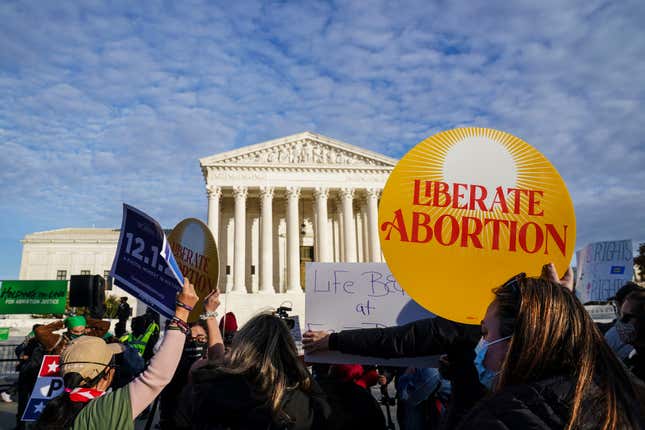Congress Failed to Protect Abortion. Now the Fight Turns Local.
As the Supreme Court prepares to gut Roe v. Wade, it's time to look past the federal government for help.
AbortionPolitics

In a historic move last week, the Senate finally scheduled a vote for the Women’s Health Protection Act (WHPA), a bill Democrats have been trying to pass for a decade that would codify Roe v. Wade into federal law and enshrine federal protections for abortion rights. Then, of course, Senate Republicans and their Democratic buddy, noted Grim Reaper of political progress Joe Manchin, blocked the legislation.
If you care even vaguely about the very basic human right to not be forced by the state to give birth, I’d wager you’re probably pretty frustrated right now: States are practically racing each other to pass the worst possible abortion bans, the Supreme Court is all but guaranteed to overturn Roe in its upcoming decision on Dobbs v. Jackson Women’s Health, and we’re watching in real-time as the Democratic-controlled federal government does absolutely nothing about it.
But there’s still cause for hope—and certainly for action—in the absence of federal help. On the state, local, and community levels, the vital protections and supports baked into WHPA are already here. In January, New Jersey became the first state to codify abortion rights into state law in 2022, joining 14 other states and DC with similar, proactive protections. Just last month, Vermont lawmakers passed a first-of-its-kind constitutional amendment to guarantee the right to abortion and contraception, pending approval from Vermont voters later this year.
-

-

-

-

-

-

-

-

-

-

-

-

-

-

-

-

-

-

-

-

-

-

-

-

-

-

-

-

-

-

-

-

-

-

-

-

-

-

-

-








































